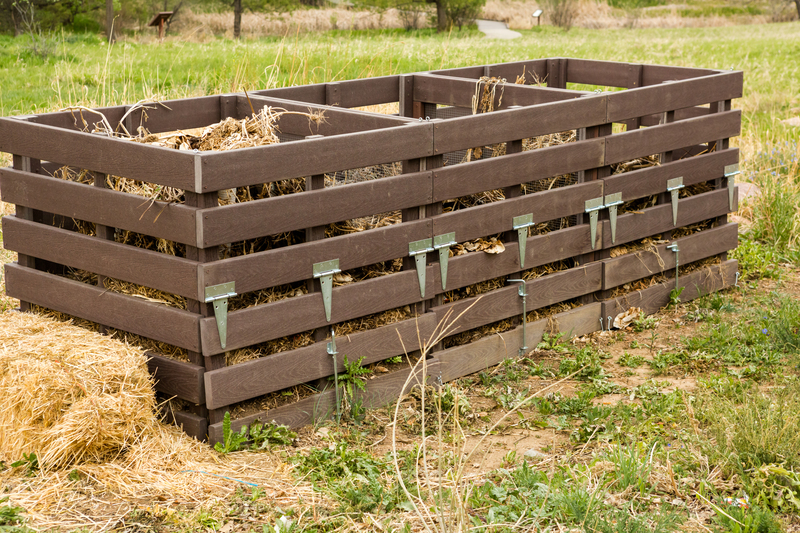Simple Solutions for Sustainable PPE Waste Management
The global pandemic highlighted the critical importance of personal protective equipment (PPE) in safeguarding public health. However, the massive surge in PPE usage has also led to a surge in waste, creating unique environmental challenges. This article explores practical, effective, and sustainable solutions for PPE waste management--balancing human safety with the planet's well-being.
Understanding the PPE Waste Challenge
As PPE such as masks, gloves, and gowns become integral to daily life, the volume of PPE waste entering landfills, waterways, and the environment has dramatically increased. Sustainable PPE waste management is more necessary than ever to address health, ecological, and waste infrastructure concerns.
Why Is PPE Waste a Problem?
- Non-Biodegradability: Most PPE items are made from plastics like polypropylene, which persist in the environment for decades.
- Pandemic Response: The unprecedented demand during COVID-19 led to single-use reliance, overwhelming standard waste disposal systems.
- Threat to Wildlife: Discarded PPE can entangle, choke, or be ingested by animals, causing injury and death.
- Public Health Risk: Improper disposal spreads pathogens, endangering sanitation workers and communities.

Principles of Sustainable PPE Waste Management
In order to *develop resilient systems for PPE disposal*, it's vital to focus on the established waste management hierarchy: Reduce, Reuse, Recycle, and Recover.
1. Reduce
- Educate On Appropriate Use: Train communities and workplaces on when PPE is truly necessary to avoid excessive usage.
- Adopt Alternatives: Use reusable PPE where possible (such as washable cloth masks instead of single-use options).
2. Reuse
- Support for Reusable PPE: Encourage the use and manufacture of durable reusable PPE products, designed for cleaning and longevity.
- Proper Sterilization: Establish protocols for safely disinfecting and reusing PPE, especially in healthcare and industrial settings.
3. Recycle
- Innovative Recycling Programs: Partner with companies that specialize in recycling PPE materials.
- Sorting and Segregation: Set up dedicated collection points for clean or lightly used PPE waste to facilitate recycling.
4. Recover
- Energy-from-Waste: Consider safe incineration techniques with energy recovery to reduce landfill burden while generating electricity or heat.
Effective Strategies for PPE Waste Management
Below are detailed yet simple solutions and practical strategies to achieve sustainable PPE waste management in hospitals, workplaces, schools, and households.
1. Separate Collection and Clear Labelling
Implement separate PPE waste bins in strategic locations with clear, bold labeling. This prevents PPE from mixing with general or recyclable waste.
- Use color-coded bins (such as red for PPE) to increase compliance and reduce cross-contamination.
- Educate users through posters featuring bold, simple visuals and instructions.
2. Collaborate with Specialized Recycling Schemes
Companies and organizations can partner with specialist recyclers (e.g., TerraCycle) that accept PPE waste for advanced processing.
- Set up regular collection services for used masks, gloves, and gowns.
- Create collection points in businesses, universities, and retail spaces to maximize accessibility.
3. Promote Reusable PPE Adoption
Encourage staff and the public to choose reusable options wherever feasible:
- Reusable Fabric Masks: Promote the use of multilayer cloth masks, which can be washed and reused.
- Durable Face Shields: Choose shields that are easy to sterilize and built to last.
- Washable Gloves and Gowns: For industries or healthcare settings, opt for PPE that can withstand repeated cleaning.
4. Safe and Secure Storage Before Disposal
- Designate secure storage areas for collected PPE waste to minimize environmental contamination and public health risks.
- Use sealed, puncture-proof containers to protect sanitation workers during handling.
5. Community and Staff Training
Ongoing education is key for effective and sustainable PPE waste disposal. Organize regular training and awareness campaigns covering:
- Proper PPE disposal procedures
- The significance of segregating PPE waste
- Environmental impacts of improper PPE disposal
Innovations and Technological Solutions
As the need for sustainable management of PPE waste grows, new technologies are being developed to handle this unique waste stream effectively, safely, and sustainably.
1. Mechanical and Chemical Recycling
Some plastics used in PPE can be processed into raw materials for other products:
- Polypropylene Masks: Can be shredded and melted to make construction materials, outdoor furniture, or road surfaces.
- Chemical Depolymerization: Technology to break down PPE plastic into basic monomers for new uses.
2. Pyrolysis and Energy Recovery
Advanced incineration technologies such as pyrolysis convert PPE waste into syngas and oils, reducing landfill load while generating energy.
3. Biodegradable and Compostable PPE
Research and development are underway for eco-friendly PPE crafted from biodegradable materials like cellulose and polylactic acid (PLA).
- Encourage manufacturers and governments to invest in next-generation PPE that safely decomposes in natural environments.
Household Solutions for Reducing PPE Waste
Everyone can contribute to minimal PPE waste by being mindful at home. Here are simple actions everyone can take:
- Choose reusable masks and face coverings. Wash and care for them regularly.
- Educate family members--especially children--on why disposing of PPE responsibly is important. Use clear labels and easy access bins.
- Reuse PPE where safe and appropriate. Only use disposable PPE when required, and never flush masks or gloves down the toilet.
- Avoid littering. Carry a small sealable bag when outdoors to store used PPE until you can dispose of it at home.
Workplace and Public Space PPE Waste Management Tips
- Install PPE-specific disposal points at entry and exit locations.
- Regularly empty PPE bins to prevent overflow and contamination.
- Monitor and audit PPE waste streams to track progress and identify areas for improvement.
- Encourage employee feedback--employees are often the first to notice practical barriers or new opportunities for improvement.
Policy, Legislation, and Producer Responsibility
For long-term sustainable PPE waste management, policy changes play a pivotal role. Governments can incentivize or mandate:
- Use of biodegradable PPE materials
- PPE take-back and recycling schemes funded by manufacturers
- Research grants for innovation in PPE reduction, reuse, and recycling technologies
- Mandatory eco-labeling so purchasers and users know which PPE has a lower environmental impact.
Extended Producer Responsibility (EPR)
EPR policies make manufacturers accountable for the full life-cycle management of their PPE products. This approach:
- Promotes the design of more eco-friendly PPE
- Reduces the financial and logistical burden on municipal waste systems
- Accelerates development of scalable recycling streams for PPE plastics

The Future of Sustainable PPE Waste Management
Innovation, collective responsibility, and clear communication form the backbone of effective PPE waste strategies. With rising awareness and evolving technology, the future of PPE waste management is moving toward a circular economy, where waste becomes a resource.
Integrated Waste Management Programs
The most effective approach is a multi-layered solution combining reduction, reuse, recycling, energy recovery, and policy interventions. Collaboration between:
- Healthcare and manufacturing sectors
- Local and national governments
- Households and individuals
- Recycling and waste management companies
...can deliver sustainable, scalable results.
Key Takeaways: Simple Solutions for PPE Waste
- Choose reusable PPE where suitable. Prioritize cloth masks, washable gowns, and durable face shields.
- Separate and clearly label PPE waste bins to prevent contamination and enable effective recycling or disposal.
- Join or start PPE recycling initiatives by researching local schemes or collaborating with waste management firms.
- Participate in education and awareness campaigns to ensure your workplace or household understands best practices.
- Advocate for sustainable design and policy--urge suppliers, employers, and policymakers to choose and promote greener PPE solutions.
Conclusion: Your Role in Sustainable PPE Waste Management
Addressing the mounting problem of PPE waste does not require complex or costly interventions. By adopting these simple solutions for sustainable PPE waste management, we can protect both human health and the environment.
*From choosing reusable masks to supporting innovative recycling and composting initiatives, every action counts.* Let's work together to steward our planet's future through responsible, sustainable PPE waste solutions--because safety and sustainability should always go hand in hand.
For more tips on sustainable waste practices and eco-friendly living, subscribe to our newsletter or explore our informative resource library today!